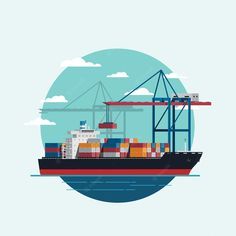
Surrendered B/L, Telex release, Seaway B/L - Three separate terms but almost the same meaning
- Author: Đinh Hằng at
- Specialized news
Operating in the field of import-export & forwarding, in the case of import-export shipments transported by sea, the shipper will be issued a type of document, which can be considered a receipt of goods, evidence of legal compliance. Transport contract and documents proving ownership of the shipment - Bill of Lading (B/L).
Normally, when importing and exporting by sea, after the ship departs, the Shipper will request the shipping company or forwarder to issue the original bill of lading (Original B/L) in 03 copies. Then give those 3 copies back to Shipper.
After receiving the original bill of lading, Shipper transfers all 03 copies to Consignee by Air. When the goods arrive at the port of destination, they are forced to bring those 03 originals to the shipping company and pay Local charges. Only then will the shipping company accept to deliver D/O, which allows the Consignee to receive the shipment.
However, sending the original bill of lading from Shipper to Consignee for them to pick up the goods is both time-consuming and expensive, and the procedure is complicated and troublesome.
Unfortunately, if the original bill of lading is lost, the shipping company will not reissue it. If the consignee wants to receive the goods, he or she must commit to paying a mortgage, usually 110% of the value of the goods, and keep it for 2 years. In reality, there are many cases where the goods have arrived at the port but the original B/L has not reached Consignee yet.
At this time, the importer will switch to using Surrendered B/L to be able to receive goods at the port of destination without having to present the original B/L.
1. Surrendered B/L
Surrendered B/L is a normal bill of lading that is stamped "SURRENDERED " by the carrier or agent with the meaning "the original has been returned, recovered or there is no original" and has content almost identical to the original bill of lading.
To make a Surrendered B/L, in fact, Shipper only needs to ask the shipping company or forwarder to make a Surrendered B/L, without requiring the original bill of lading. Making a Surrendered Bill will save time and procedures in delivery.
In essence, Surrendered B/L is just like a shipping company’s receipt for Shipper without the full functions of a bill of lading, so in fact, Surrendered B/L is often used in case the shipper believes their partner.
2. Telex Release
Telex release here is roughly understood as a phone call, fax, or email... from the shipping line or forwarder requesting their agent or office at the port of destination to deliver the goods to Consignee without the original bill of lading.
Even if the original bill of lading is not issued when the goods arrive at the port of destination, Shipper can still request the shipping line or forwarder not to deliver the goods to Consignee by asking the shipping line or forwarder not to make a Telex Release, then the bill of lading has not yet been Surrendered, so Consignee has not yet been able to receive the goods. This situation is quite popular.
Sometimes the parties stamp Telex Release on the B/L instead of the word Surrendered, and it is understood in the same meaning
3. Seaway B/L
The concept of Seaway Bill is simple to understand because it is similar to a normal bill of lading but meets the requirements of speed and cost in releasing goods to Consignee.
The difference between it and Surrendered B/L is that using Surrendered B/L means that the shipping company or agent issues an original set of B/L and then revokes it, while it is not necessary to do that for using Seaway B/L.
When the carrier issues the Seaway B/L to Shipper, the carrier will notify the agent at the port of destination. At this time, the shipment is considered to have been "released". The release of goods takes place very quickly through the shipping line's internal electronic system, so it is also called Express Release.
So the concepts of Telex release, Surrendered and Seaway are different, but their meaning is almost similar. This is when the bill of lading has been Telex, Surrendered, or Seaway, it is understood that the shipper has accepted the release of goods to the consignee unconditionally.


